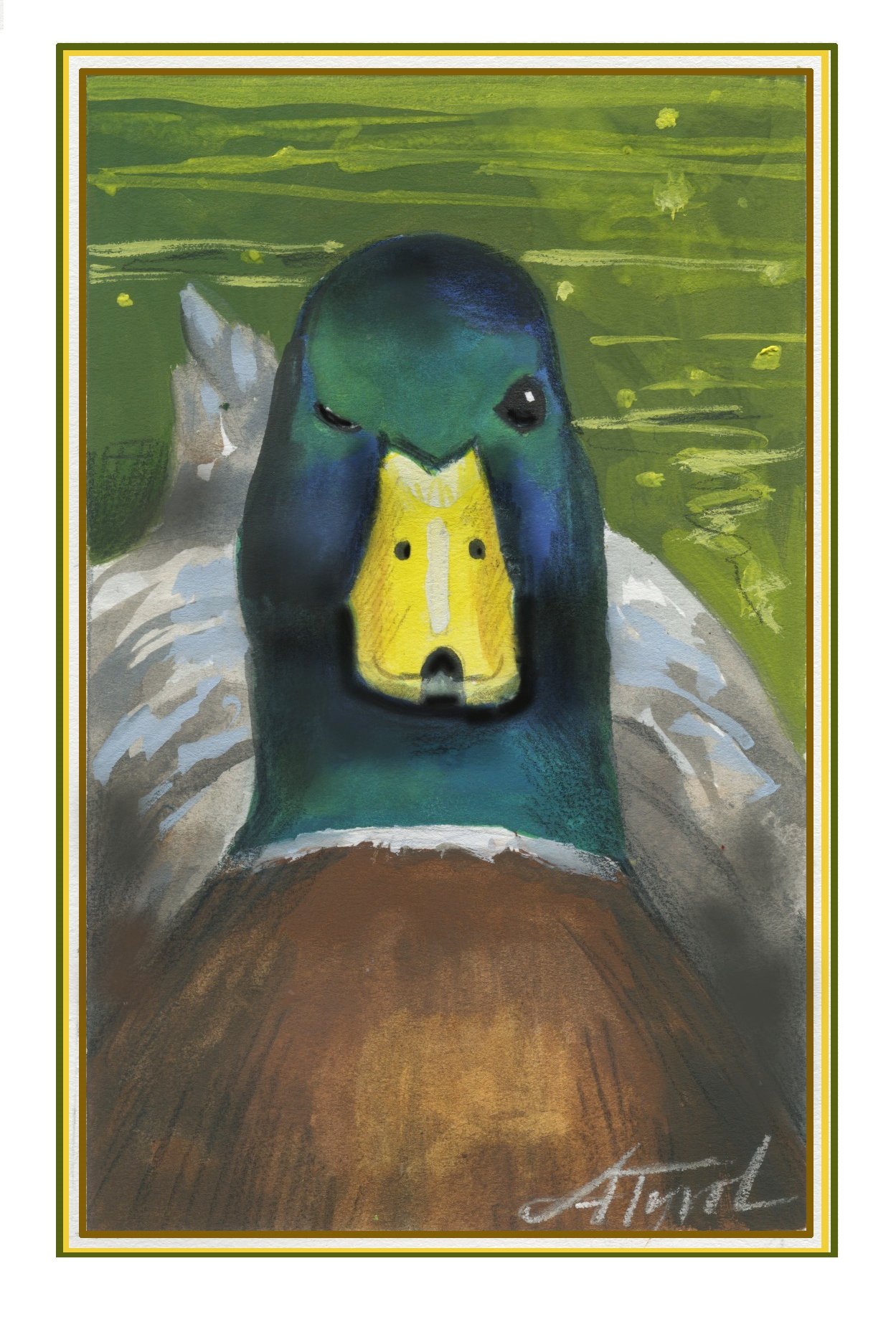Yes, the ducks with one eye closed are sleeping
August 23, 2024 | By Michael J. Caduto | The Outside Story Illustration by Adelaide Murphy Tyrol
Birds exist in a fluid and unpredictable world. Survival depends on remaining constantly alert, adapting and responding to encounters with predators and environmental conditions that change with the seasons, weather, and geography.
But sleep is also essential, providing rest, rejuvenation, and healing.
Normally, day-active (diurnal) animals sleep at night, and night-active (nocturnal) species sleep by day. During the sleep cycle, brain activity diminishes, as do metabolic rate and sensory awareness of an animal’s surroundings. When people (and many forms of wildlife) sleep, both sides of our brains disengage in a process known as bihemispheric slow-wave sleep.
Being fully asleep for hours at a time, however, would leave wild animals susceptible to predation and other environmental threats.
How do birds balance the need for sleep with the necessity for vigilance – and for undertaking epic uninterrupted flights? Unlike the nightlong rest of humans, birds can sleep in multiple short cycles that often last just a few minutes but repeat hundreds of times each day. Each avian sleep cycle includes both deep slow-wave sleep and rapid eye movement (REM) sleep. (In humans, REM is when most dreams occur.)
Some birds possess an extraordinary ability for short-cycle sleep. According to researcher Niels Rattenborg of the Max Planck Institute for Biological Intelligence in Germany, his team’s study of breeding chinstrap penguins showed the birds “obtained large amounts of [slow-wave sleep], but via over 600 microsleeps per hour, lasting on average 4 seconds.”
In order to remain aware of and responsive to their environments, birds – and some marine mammals – engage in unihemispheric slow-wave sleep, keeping one half of the brain and the associated eye active, while the other side sleeps. Birds of all stripes – from sparrows and falcons to parakeets and waterfowl – can engage in such sleep.
Mammals that are fully aquatic, such as dolphins and whales, rely almost exclusively on unihemispheric slow-wave sleep, during which the awake side of their brain enables them to swim and continue surfacing to breathe.
Birds can rest with both hemispheres of the brain asleep when they’re in a relatively safe environment, or with one hemisphere asleep and the other awake when they need to remain aware and active. When only one side of their brain is asleep, the eye associated with the awake side remains open. Scientists have studied this sleep behavior in blackbirds, pigeons, mallards and other species. When mallards rest in groups, individuals on the outside of the gathering who need to remain vigilant are more likely to sleep with one eye open (one-half of the brain awake). “They direct the open eye away from the other ducks as if watching for approaching predators,” Rattenborg said.
During a study published in the journal “Nature Communications,” for which Rattenborg was the lead investigator, researchers used electroencephalogram recordings to demonstrate that great frigatebirds on non-stop oceanic foraging flights that lasted for several days can sleep with one or both hemispheres of the brain at a time. Frigatebirds in the midst of long-range flights of up to 10 days spent just over 7% of the time sleeping (about 45 minutes per day), but slept for more than 12 hours upon returning to the nest.
When frigatebirds are circling in flight, Rattenborg said, “There is a strong relationship between which hemisphere is sleeping and the direction (left or right) in which they are turning.”
Frigatebirds keep the eye facing into the turn open, likely to avoid colliding with other birds. Similarly, depending on which eye it needs to see by, a dolphin can alternate which side of its brain is active, and which is asleep. “Mother dolphins and their calves keep the open eye on each other as they sleep unihemispherically while swimming,” Rattenborg said.
Do people share the avian ability to remain aware while asleep? An Indiana State University study on ducks inspired research that demonstrated that although human brains cannot induce a full unihemispheric slow-wave sleep response, in unfamiliar environments our right hemisphere can maintain deep sleep while the left hemisphere experiences relatively shallow sleep and heightened awareness.
While we can’t sleep with one eye open, anyone who has spent the night in an unfamiliar environment can likely relate to feeling half-awake, and half-asleep.
Michael J. Caduto is a writer, ecologist, and storyteller who lives in Reading, Vermont. He is author of “Through a Naturalist’s Eyes: Exploring the Nature of New England.” The Outside Story is assigned and edited by Northern Woodlands magazine and sponsored by the Wellborn Ecology Fund of New Hampshire Charitable Foundation.

